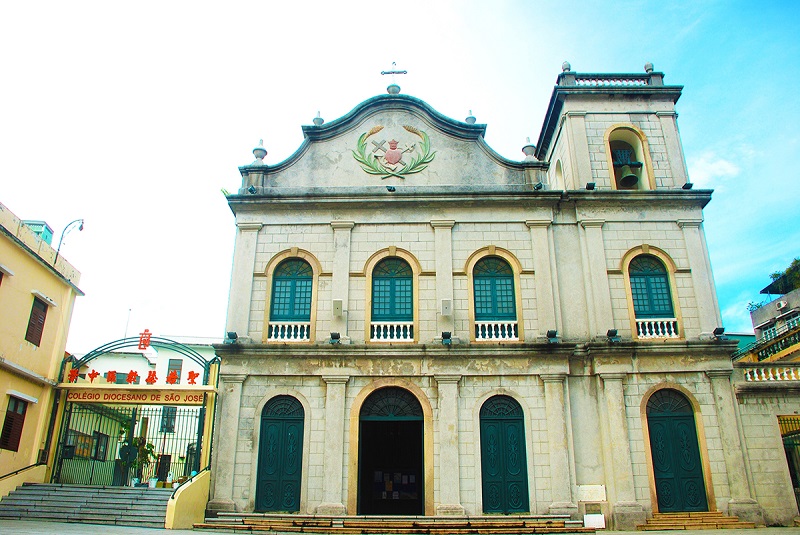This article first appeared in the Sep/Oct 2016 issue of WGM.
St Lazarus Quarter, also known as the “Leprosy Quarter,” is located in the central part of Macau Peninsula. From the 16th to the 21st century, this district experienced many ups and downs. As the origin of the first Chinese Catholic Diocese in Macau, it was listed as one of the major government-protected cultural properties in 1984. Now it exists in a vivid form as a base for cultural and creative industries. As you delve deep into its soul, you will not only find a beautiful neighborhood full of Southern European style but many fascinating stories of the Macau Catholic Diocese.
“LEPROSY QUARTER”
When you walk into St Lazarus Quarter, the most striking landmark is St Lazarus’ Church, also known as Church of Our Lady of Hope. Among the 20-plus churches in Macau there is nothing outwardly superior about it, however in the Macau Catholic Diocese – and especially among the Chinese Catholics in Macau – St Lazarus’ Church is of special significance. It is not only one of the three oldest churches in Macau, but was also the first cathedral in Macau and the first Chinese church in Macau.
Why was this church built? It is said that in 1566, Bishop Melchior Carneiro came to Macau and arrived at the St Lazarus district, which was out of town back then. What he discovered was many, many lepers exiled from the town so, distraught by their misery, he established a leper hospital the following year. The Bishop also built St Lazarus’ Church next to it dedicated to Our Lady of Hope to give patients somewhere to pray. The Portuguese name of the church is Igreja de São Lázaro. The word “Lázaro” has two meanings. One is related to the story of “The Rich Man and Lazarus” in the Bible.
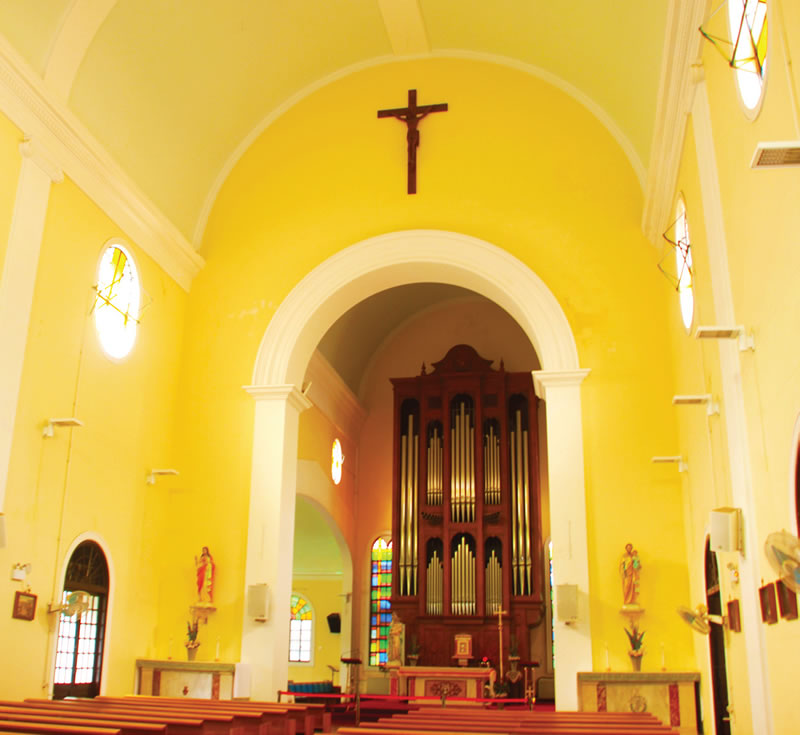
St Lazarus Church features a modern baroque architecture style
“There was a rich man who was dressed in purple and fine linen and lived in luxury every day. At his gate was laid a beggar named Lazarus, covered with sores and longing to eat what fell from the rich man’s table. Even the dogs came and licked his sores.
“The time came when the beggar died and the angels carried him to Abraham’s side. The rich man also died and was buried. In Hades, where he was in torment, he looked up and saw Abraham far away, with Lazarus by his side. So he called to him, ‘Father Abraham, have pity on me and send Lazarus to dip the tip of his finger in water and cool my tongue, because I am in agony in this fire.’
“But Abraham replied, ‘Son, remember that in your lifetime you received your good things, while Lazarus received bad things, but now he is comforted here and you are in agony. And besides all this, between us and you a great chasm has been set in place, so that those who want to go from here to you cannot, nor can anyone cross over from there to us.’
“He answered, ‘Then I beg you, father, send Lazarus to my family, for I have five brothers. Let him warn them, so that they will not also come to this place of torment.’
Abraham replied, ‘They have Moses and the Prophets; let them listen to them.’
“‘No, father Abraham,’ he said, ‘but if someone from the dead goes to them, they will repent.’
“He said to him, ‘If they do not listen to Moses and the Prophets, they will not be convinced even if someone rises from the dead.'” – Luke 16:19
This story warns the world: indifference and neglect is terrible, do not ignore the needs of others – otherwise they will be like the rich man in the story and suffer in hell after death. Second, the Portuguese word “Lázaro” also means “lepers”, hence some people call the church Leprosy Quarter or Lepers Temple.
THE CHURCH’S TRANSCENDENT STATUS
On January 23, 1576, Pope Gregory XIII declared the establishment of diocese in Macau and requested to have a church with “Our Lady” in its name as the cathedral of Macau. Back then there were three churches in Macau, namely St Anthony’s Church, St Lawrence Church and St Lazarus Church (Church of Our Lady of Hope). Therefore St Lazarus Church takes up the historical responsibility of leading the Macau Catholic Diocese.
Later on, the Portuguese continued to settle in Macau and the population soared. In 1623, Catholics believed that the cathedral should be closer to the Av Almeida Riberio area in the central part of the city and moved away from the leper hospital. Therefore, the current cathedral was constructed. At the end of the 19th century, serious plague spread through St Lazarus Quarter. The then Governor Costa made a wise decision to raze the wooden houses in the area to the ground. The area was thoroughly cleared and single-storey houses were rebuilt. The leper hospital was moved to Coloane.
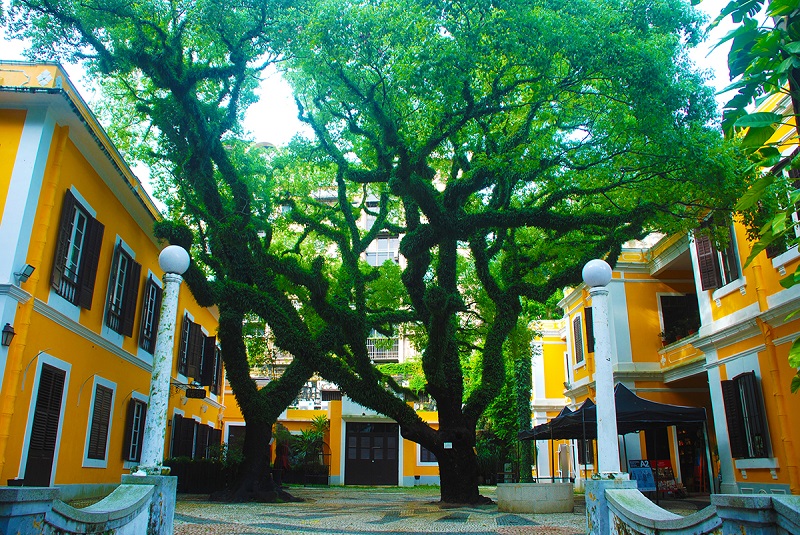
Old Ladies House is where the Catholic “self-combing women” lived
Although this cathedral no longer had its “big brother” status and had been separated from the leper hospital for years, its prestige remained. Whenever a new bishop was inaugurated, he would come to St Lazarus Church to receive his crosier with which he would be allowed to exercise his power. This ceremony lasted till the inauguration of Arquimínio Rodrigues da Costa in 1976. Now, some streets near the church still have “leper” in their names for commemoration.
ROCH BLESSING THE CITY
The sacred image at the right side of the entrance to St Lazarus Church is the most noteworthy. It is of the only patron against plague in all of Macau’s churches – Saint Roch. Roch was born into a French noble family in the 13th century. He was marked from birth by a red cross on his chest. At the age of 12, his parents both died and he lived with his uncle, a Duke.
Although Roch inherited a significant fortune from his parents, he was not greedy about wealth. Instead, he spread wealth to the poor and went on a pilgrimage to Rome. When he arrived in northern Italy, there was an outbreak of plague but although he was just passing by he did not hurry away. Instead, he stayed to help victims in the name of Christ. Many patients fully recovered because of his good care and intercession, but unfortunately he contracted the plague himself.
In order to avoid burdening others, Roch ran off to live in seclusion in a cave. A dog brought bread to him every day and he recovered without any medication or treatment. After that, Roch ventured back to his hometown where he was accused of being a spy and imprisoned for five years. When he died, a blue light shined in his cell. Due to his experience, Roch has been called the patron saint against plague. His sacred image was accompanied by a dog with bread in its mouth. Rua de São Roque in St Lazarus Quarter was also named after him.
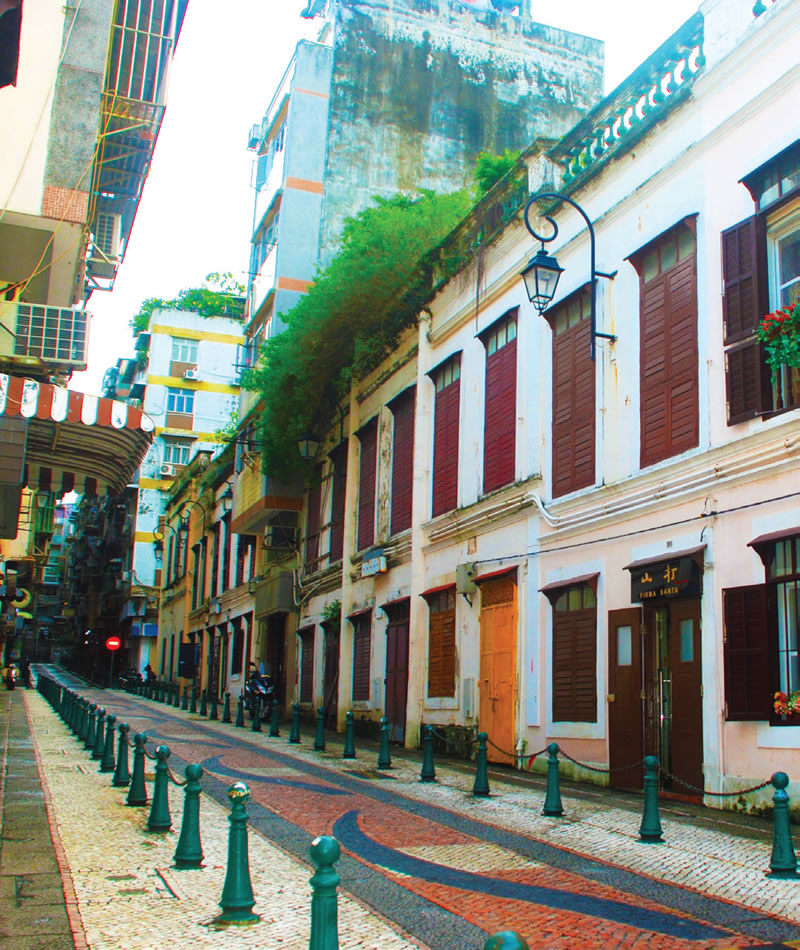
St Lazarus Quarter retains lots of old Portuguese architecture
In 2003, many places were affected by the SARS epidemic. Even though the starting area Shun De, Guangdong and the outbreak area Hong Kong were close to Macau, there was only one imported case found in Macau. It’s said that this is because the Macau faithful went to St Lazarus Church to pray to Saint Roch.
“SELF-COMBING WOMEN” BELIEVING IN GOD
In the past, the St Lazarus Church area was inhabited by the Chinese Catholics. The Portuguese missionaries initially used Macau as a base for missions to mainland China. Towards the end of the Qing Dynasty, Boxer Rebellion fighters in China started to wipe out heretics all around. At that time, Father Augustin led a group of followers who fled to Macau and settled in St Lazarus Quarter outside of the city walls. Since then, more and more Chinese Catholics have lived here. St Lazarus Church became the first Chinese church in Macau.
The Chinese Catholic believers under the repression of the Qing government had their own set way of life. At that time, some Chinese used Portuguese names to be baptized in order to avoid investigation by the Qing government. A group of “self-combing women” that combined the Guangdong customs and Catholic beliefs also appeared. The term “self-combing” originated from Shunde, Guangdong. These women were different from others in that they vowed to remain unmarried throughout their lives. They were called zishu nü or “self-combing women” because they declared their status as permanently unmarried through a rite which involved combing their hair into a bun similar to that of a married woman. They lived together with other like-minded “self-combing women.”
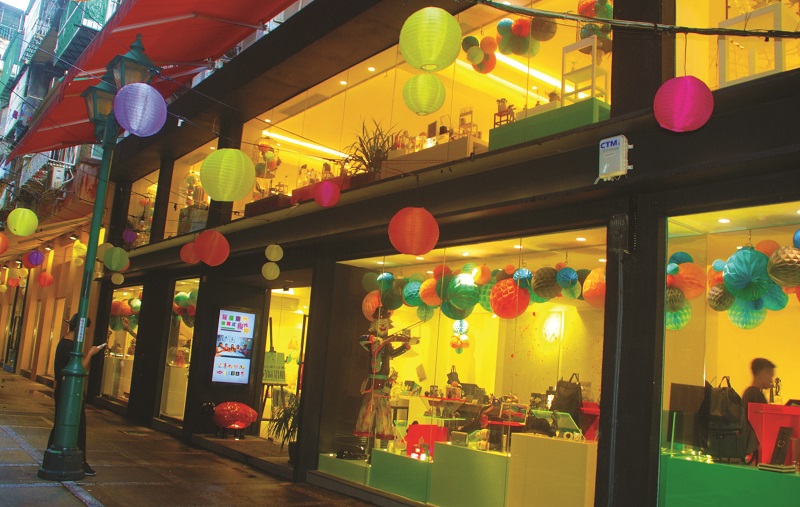
Pátio de S. Lázaro is a charming alley selling cultural and creative products
These Chinese women didn’t want arranged marriages and they were also influenced by the tradition of Catholic nuns not to marry. However, they were different than foreign nuns in terms of lifestyle and language. They participated in Catholic “self-combing” rites and vowed not to marry for life to serve the Lord. This ceremony is not like the Chinese tradition of vowing to Buddha in temples. Instead, they swear to God in St Lazarus Church. These women lived together in a compound known as “Old Ladies House” to the right of the church. They participated on an equal footing with the male believers in church affairs, prayed for the dying and helped with burial ceremonies. They were widely respected by people in the area.
CULTURAL AND CREATIVE INDUSTRY BASE
“Old Ladies’ House” has stood for more than a century. Its original name was “House of the poor.” The house accepted a large number of refugees and poor people during the Japanese invasion of China in the second world war. Later on it evolved into a female nursing home, which is why it is called Old Ladies House. Over 100 guests lived here at its peak.
Currently the House has become one of the incubators of the cultural and creative industries in Macau with the local government having actively built the area into a cultural and creative industries base camp. 10 Fantasia, right next to the House, is not to be missed. There are various local culture and arts exhibitions in this three-storey ancient building and on the weekends, the arts atmosphere here is even stronger. “Sun Never Left” is held here between 15:00 and 18:00 every Saturday and Sunday, including street music, painting and handicrafts.

St Lazarus Quarter has played different roles at different times, from caring for leprosy patients to the city’s early Catholic activity center to its current role as a cultural and creativity industries base. Many old historic buildings still stand. Some continue to quietly serve local residents, while some were reinvigorated with new energy. The old and new elements staggered.
I recommend taking this story when you visit this cultural treasure hunt. It will add to what is a profound and fascinating experience.

